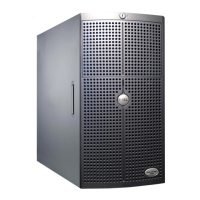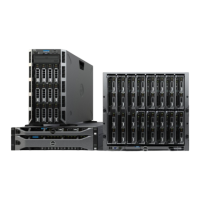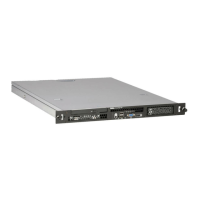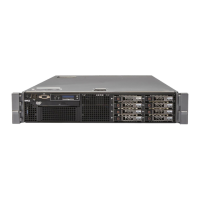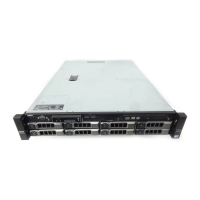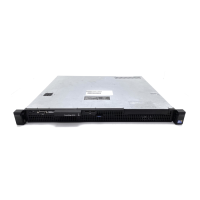Do you have a question about the Dell PowerEdge 2950 and is the answer not in the manual?
System status and error messages displayed on the control panel LCD.
Messages that appear on the screen to notify of system problems.
Steps to access the system setup utility during system startup.
Configuration options for system and setup passwords.
Details on system password security features and management.
Steps for safely opening and closing the system cover.
Procedures for installing and configuring SAS or SATA hard drives.
Procedures for installing and replacing system power supplies.
Procedures for installing and removing system memory modules.
Procedures for installing and removing system processors.
Steps to resolve problems indicated by amber power supply indicators.
Addressing system overheating issues and fan-related errors.
Procedures to resolve issues related to memory modules or the system board.
Steps to resolve issues with hard drive recognition or driver errors.
Steps to resolve issues with installed expansion cards.
Steps to resolve issues related to processors or heat sinks.
Procedure to disable system and setup passwords using a jumper.
| Tcase | 67 °C |
|---|---|
| Bus type | FSB |
| Stepping | E0 |
| FSB Parity | Yes |
| Processor code | SLBBP |
| Processor cache | 12 MB |
| Processor cores | 4 |
| Processor model | E5405 |
| System bus rate | - GT/s |
| Processor series | Intel Xeon 5400 Series |
| Processor socket | LGA 771 (Socket J) |
| Processor codename | Harpertown |
| Motherboard chipset | Intel® 5000X |
| Processing Die size | 214 mm² |
| Processor frequency | 2 GHz |
| Processor cache type | L2 |
| Processor lithography | 45 nm |
| Processor manufacturer | Intel |
| Processor package size | 37.5 x 37.5 mm |
| Processor front side bus | 1333 MHz |
| Processor operating modes | 64-bit |
| ECC supported by processor | No |
| Thermal Design Power (TDP) | 80 W |
| Number of processors installed | 1 |
| CPU multiplier (bus/core ratio) | 6 |
| Number of Processing Die Transistors | 820 M |
| HDD size | 3.5 \ |
| HDD capacity | 160 GB |
| HDD interface | Serial ATA |
| Total storage capacity | 3320 GB |
| Maximum storage capacity | 6 TB |
| Graphics card | ES1000 |
| Memory slots | 8x DIMM |
| Internal memory | 4 GB |
| Memory clock speed | 667 MHz |
| Internal memory type | DDR2-SDRAM |
| Maximum internal memory | 64 GB |
| Memory layout (slots x size) | 2 x 2 GB |
| Maximum graphics card memory | 16 MB |
| Networking features | Broadcom NetXtreme IITM 5708 Gigabit5 Ethernet NIC |
| Supported network protocols | TOE (TCP/IP) |
| Other network protocols supported | iSCSI Boot |
| PS/2 ports quantity | 0 |
| USB 2.0 ports quantity | 5 |
| Bundled software | Symantec Backup ExecTM 12.5 Symantec Backup ExecTM System Recovery 8.5 CommVault 7.0 Vizioncore |
| Compatible operating systems | Microsoft Windows Server 2008, Microsoft Windows Server 2003 Red Hat Linux Enterprise SUSE Linux Enterprise Server 10 x86-64 VMware ESX 3.5 |
| Chassis type | Rack (2U) |
| Storage temperature (T-T) | -40 - 65 °C |
| Operating temperature (T-T) | 10 - 35 °C |
| Storage relative humidity (H-H) | -40 - 65 % |
| Operating relative humidity (H-H) | 20 - 80 % |
| Certification | FCC (U.S. only) Class A ICES (Canada) Class B CE Mark (EN 55022 Class B, EN55024, EN61000-3-2, EN61000-3-3) VCCI (Japan) Class B BSMI (Taiwan) Class A C-Tick (Australia/New Zealand) Class B SABS (South Africa) Class B CCC (China) Class B MIC (Korea) Class B UL 60950 CAN/CSA C22.2 No. 60950 EN 60950 IEC 60950 |
| Processor ARK ID | 33079 |
| Depth | 744 mm |
|---|---|
| Width | 444.3 mm |
| Height | 86.4 mm |
| Weight | 23000 g |



